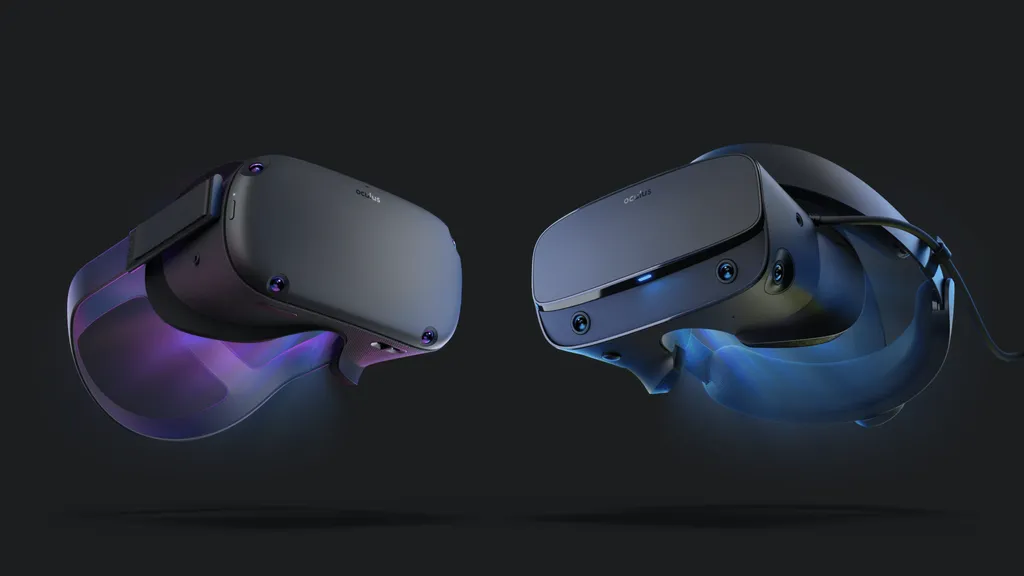In 2018 the first major standalone VR headsets launched; Oculus Go, HTC Vive Focus, and Lenovo Mirage Solo. Due to their limited input devices they are mainly used for media consumption. But this year, standalone headsets focused on gaming, like Oculus Quest, will release.
These headsets open up VR to a much larger market than before, but have considerably less computing power than a PC or PS4, which have been the home of gaming VR so far.
But just how big is this computing power difference? How much do developers have to work with?
CPU
The CPU (central processing unit) is the general purpose computing component. It is responsible for a wide variety of tasks, but in games it is mainly taxed by physics and AI calculations.
To compare CPUs across platforms we are using the GeekBench 4 benchmark scores. GeekBench is specifically designed to derive computing power across different platforms without favoring any due to software or architecture differences.
The figures for Snapdragon 835 on Geekbench are taken from devices where it does not have active cooling. Oculus Quest and HTC Vive Focus have active cooling fans, so the chip can be clocked higher and sustain that speed for longer. To roughly account for this, we have applied a 15% increase.
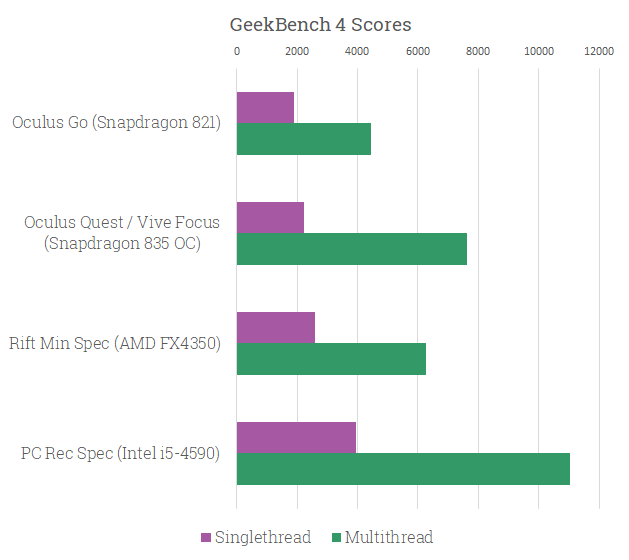
As can be seen, the 6DoF standalone headsets’ CPUs actually come close to PC minimum spec, falling behind in singlethreaded performance but actually pushing ahead in multithread.
Developers will still have to put a lot of work into optimization here, but the difference is small enough that any CPU dependent concept on PC should be able to be brought to standalone.
GPU
UPDATE: metric changed from FLOPS spec to GFXBench comparison to better account for architecture differences
The GPU (graphics processing unit) is the component responsible for rendering the actual visuals. The GPU is the main component of a video/graphics card, and thus the terms are often used interchangeably.
To compare GPUs across platforms we are using the GFXBench benchmark scores. Like GeekBench for CPUs, GFXBench is designed to take into account architecture differences.
Like with the CPU, the figure for the Adreno 540 is taken from passively cooled devices. In Oculus Quest and HTC Vive Focus performance can be higher, so we’ve applied a 15% boost.
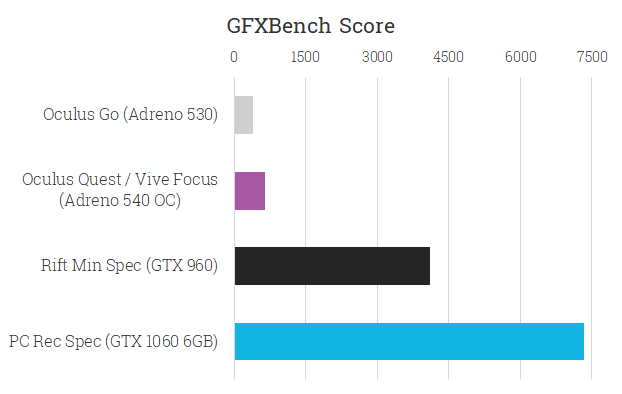
As you can see, the GPU differences between standalone and PC are far greater than the CPU- only around 15% of even the Rift’s minimum spec GPU. This is where developers will have the most trouble- mobile GPUs simply do not compare to the multi-hundred-watt beasts from NVIDIA and AMD in our PCs.
Many PC VR games will have to have the 3D assets completely redone to be brought to standalone, with simplified graphics that favor a cartoon style over realism. This is a significant amount of work, so not all developers will do so.
One factor that makes this slightly easier, however, is the lower refresh rate. Whereas PC VR runs at 90Hz, requiring 90FPS, Oculus Go and Quest operate at 72Hz, and the Vive Focus and Mirage Solo at 75Hz. This is a 20% reduction in required pixels per second. When taking this into account, the differences between PC and standalone narrow slightly:
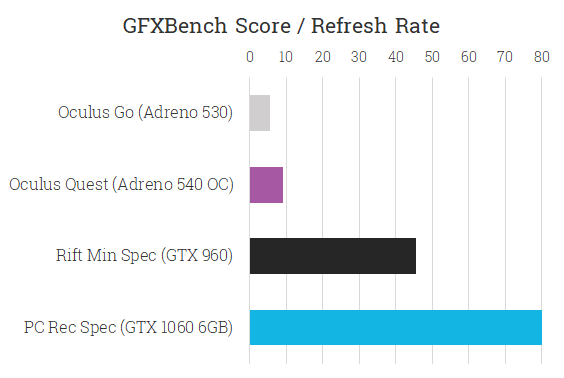
RAM
RAM (random access memory) is where currently in use data is stored, such as the current level in a game. It is significantly faster than the storage. More RAM allows for larger environments and less loading or hitching when transitioning between areas.
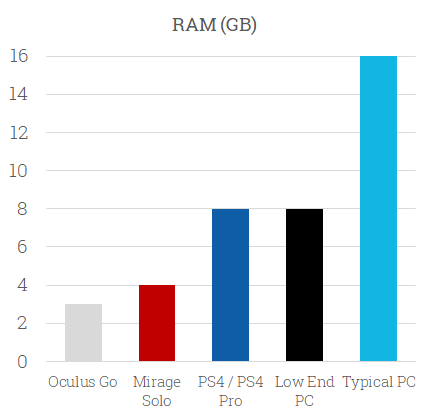
It’s important to note that on a PC or PS4, the operating system itself uses much more RAM than Android (the OS underlying standalones). Android was designed for very low RAM devices and the onboard storage is much faster than a typical hard drive, so almost all of the RAM will be available to the VR app.
Still, however, the lower RAM means that some open world games won’t be possible without loading screens or other downsizing techniques.
Facebook hasn’t given details of Oculus Quest’s RAM yet, but we expect it to be 4GB.
Storage
The amount of available storage may not seem like it matters from a developer perspective, but it does. Developers have to make difficult decisions about the amount of content they can ship in their game based on platform storage. AAA console blockbusters like Red Dead Redemption 2 can take up more than 100GB of storage, whereas Nintendo Switch games are typically single digit GB due to the platform’s 32GB default capacity.
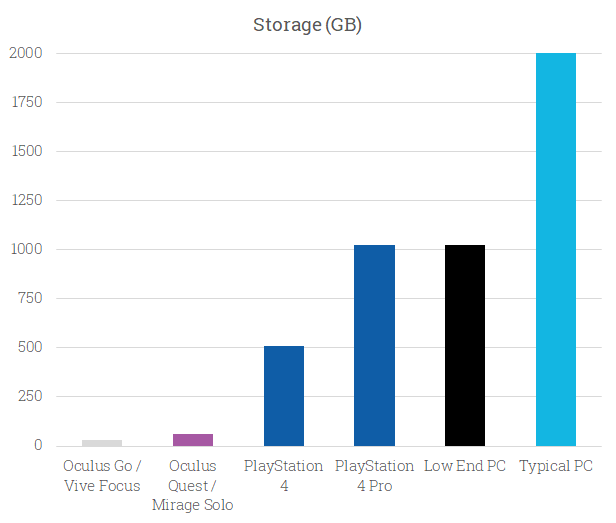
This is an area where standalones are significantly restricted compared to console or PC. And whereas those platforms support expandable storage, Oculus Go and Oculus Quest do not.

